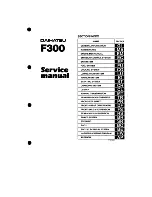
Air bags
Important safety notes
G
WARNING
Air bags are designed to reduce the incidence
of injuries and fatalities in certain situations:
R
frontal impacts (driver's and front-
passenger front air bags and knee bag on
the driver's side)
R
side impacts (side impact air bags, pelvis
air bags, window curtain air bags on the
Coupe and head bags on the Cabriolet)
R
rollover in a Cabriolet (head bags)
However, no system available today can
completely eliminate injuries and fatalities.
When the air bags are deployed, a small
amount of powder is released. The powder
generally does not constitute a health hazard
and does not indicate that there is a fire in the
vehicle. In order to prevent potential
breathing difficulties, you should leave the
vehicle as soon as it is safe to do so. If you
have any breathing difficulty but cannot get
out of the vehicle after the air bag inflates,
then get fresh air by opening a window or
door.
G
WARNING
In order to reduce the potential danger of
injuries caused during the deployment of the
front air bags, the driver and front passenger
must always be correctly seated and wear
their seat belts.
For maximum protection in the event of a
collision, you must always be in the normal
seat position with your back against the
backrest. Fasten your seat belt and make sure
that it is correctly positioned on your body.
As the air bag inflates with considerable
speed and force, a proper seating position
and correct positioning of the hands on the
steering wheel will help to keep you at a safe
distance from the air bag. Occupants who are
not wearing their seat belt, are not seated
properly or are too close to the air bag can be
seriously injured or killed by an air bag, as it
inflates with great force instantaneously:
R
sit with the seat belt fastened correctly and
in a position that is as upright as possible
with your back against the backrest.
R
move the driver's seat as far back as
possible, still permitting proper operation
of vehicle controls. The distance from the
center of the driver's chest to the center of
the air bag cover on the steering wheel
must be at least 10 inches (25 cm). You
should be able to accomplish this by
adjusting the seat and steering wheel. If
you have any difficulties, please contact an
authorized Mercedes-Benz Center.
R
do not lean your head or chest close to the
steering wheel or dashboard.
R
only hold the steering wheel on the outside.
Placing hands and arms inside the rim can
increase the risk and potential severity of
hand/arm injury if the driver front air bag
inflates.
R
adjust the front-passenger seat as far back
as possible from the dashboard when the
seat is occupied.
R
occupants, especially children, should
never place their bodies or lean their heads
in the area of the door where the side
impact air bag (Coupe) or the side impact
air bag and the head bag (Cabriolet) inflate.
This could result in serious injuries or death
should the side impact air bags (Coupe) or
side impact air bags and head bag
(Cabriolet) inflate. Always sit as upright as
possible, wear the seat belt properly and
use an appropriately sized child restraint
system, infant restraint system or booster
seat recommended for the size and weight
of the child.
Occupant safety
41
Safety
Z
Summary of Contents for E 350 BlueEFFICIENCY Cabriolet
Page 1: ...E Class Coupe and Cabriolet Operator s Manual ...
Page 4: ......
Page 38: ...36 ...
Page 106: ...104 ...
Page 150: ...148 ...
Page 268: ...266 ...
Page 269: ...Useful information 268 Stowage areas 268 Features 273 267 Stowage and features ...
Page 294: ...292 ...
Page 322: ...320 ...
Page 360: ...358 ...
Page 372: ...Order no 6515 3748 13 Part no 207 584 42 81 Edition A 2013 É2075844281tËÍ 2075844281 ...
















































